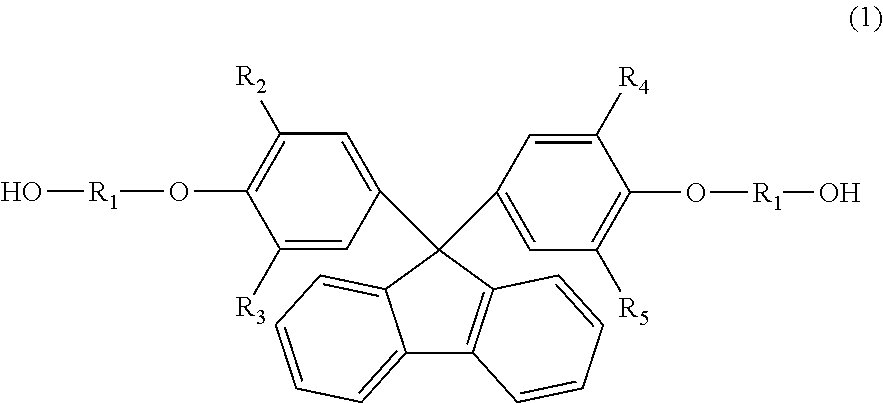Biaxially stretched laminated polyester film, infrared light shielding structure for laminated glass composed of the same, and laminated glass composed of the same
- Summary
- Abstract
- Description
- Claims
- Application Information
AI Technical Summary
Benefits of technology
Problems solved by technology
Method used
Image
Examples
embodiment
of (B-iii)
[0052]As other embodiment of the polyester (B) constituting the second layer in the present invention, there is exemplified a polyester having a glass transition temperature of 90° C. or higher, more preferably 95° C. or higher, and especially preferably 100° C. or higher.
[0053]In view of the fact that the polyester constituting the second layer has such a glass transition temperature, the Young's modulus properties of the present invention can be obtained under a temperature condition of 90° C. without relying upon the properties and the presence or absence of the protective layer as the outermost layer, and in a process of processing into a laminated glass, fine irregularities, wrinkles, or the like by means of softening of the polyester film are hardly generated. As a result, smoothness of the film at the time of processing into a laminated glass can be kept, and excellent processability into a laminated glass is revealed.
[0054]As the polyester having such a glass trans...
example 1
[0225]Polyethylene-2,6-naphthalate (hereinafter referred to as “PEN”) having an intrinsic viscosity (in orthochlorophenol at 35° C.) of 0.62 dL / g as a polyester serving for not only a first layer but a protective layer and isophthalic acid-copolymerized polyethylene terephthalate having 12% by mole of isophthalic acid copolymerized therewith (hereinafter referred to as “IA12PET”) and having an intrinsic viscosity (in orthochlorophenol at 35° C.) of 0.65 dL / g as a polyester serving for a second layer were prepared, respectively.
[0226]Then, the polyester serving for not only the first layer but the protective layer was dried at 180° C. for 5 hours, and the polyester serving for the second layer was dried at 160° C. for 3 hours, and thereafter, the resulting polyesters were supplied into an extruder, respectively. PEN and IA12PET were heated to 300° C. and 280° C. and rendered in a molten state, respectively. The polyester serving for the first layer was branched into 90 layers, and th...
example 2
[0228]The same operation as that in Example 1 was repeated, except for changing the stretch ratio to 4.5 times in the film forming direction and 4.5 times in the width direction, respectively as shown in Table 1 and adjusting the thickness of each of the laminated structure portion and the protective layer as shown in Table 2. The layer structure of the resulting film is shown in Table 2, and the physical properties thereof are shown in Table 3.
PUM
| Property | Measurement | Unit |
|---|---|---|
| Temperature | aaaaa | aaaaa |
| Temperature | aaaaa | aaaaa |
| Fraction | aaaaa | aaaaa |
Abstract
Description
Claims
Application Information
 Login to View More
Login to View More - R&D
- Intellectual Property
- Life Sciences
- Materials
- Tech Scout
- Unparalleled Data Quality
- Higher Quality Content
- 60% Fewer Hallucinations
Browse by: Latest US Patents, China's latest patents, Technical Efficacy Thesaurus, Application Domain, Technology Topic, Popular Technical Reports.
© 2025 PatSnap. All rights reserved.Legal|Privacy policy|Modern Slavery Act Transparency Statement|Sitemap|About US| Contact US: help@patsnap.com

